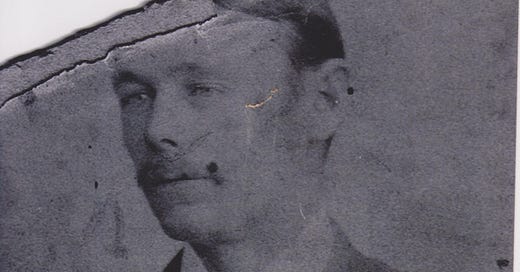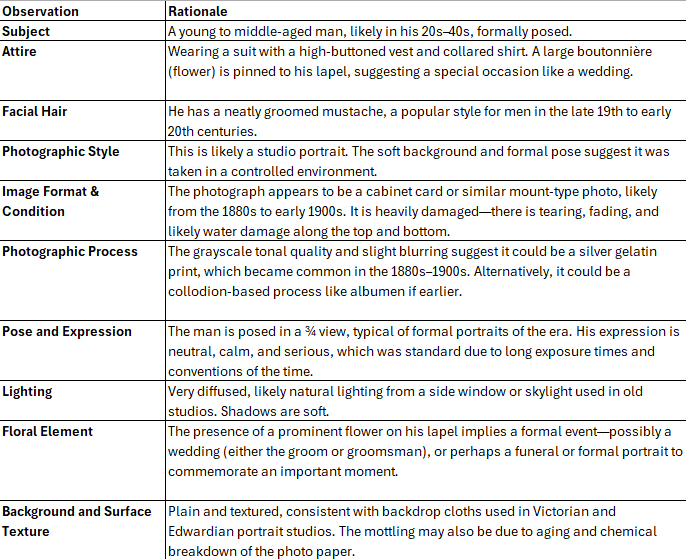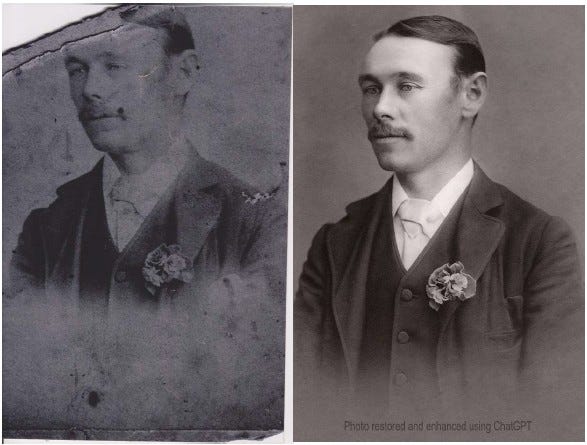I've been revisiting some of the oldest family photos in my collection—those grainy, damaged images that make you wonder, Who exactly is this? One portrait, in particular, caught my attention and needed clarification. We believe it may be an ancestor born in Shropshire in 1826, who was later transported to Western Australia in the 1850s.
To see if I could pull more from it, I gave ChatGPT a go—not just for photo enhancement, but to actually analyse the image. I was genuinely surprised at how much it could offer. It looked at the clothing, lighting, pose, and even the photographic technique to give a possible timeframe and purpose for the photo—something like a wedding or formal portrait late in life.
During my initial conversation with ChatGPT, I didn't mention anything about the photo at all. However, I did use Mark Thompson’s Historical Photo Analyser GPT.
ChatGPT: Thanks for sharing this intriguing photo! There's definitely a story behind this gentleman's portrait. I've done a deep dive into the visual clues, materials, and context. Here's a breakdown of what we can observe and infer:
Then I (Jenny) added: If it's who we think it is, the man was born in Shropshire, England in 1826 and was transported to Western Australia in the 1850s. He died there in 1902.
ChatGPT: That’s a fascinating lead—and that context really helps tighten the analysis. Based on what you’ve shared, let’s reframe the details of the photo with the possibility that this man is the person born in 1826 in Shropshire, transported to Western Australia in the 1850s, and died in 1902. Assuming he is the subject, the photo would’ve been taken sometime between the 1860s and 1902, when he was an older adult.
Here’s a revised and contextualized breakdown:
Unfortunately, we do not have access to the original photo, and there are no identifying marks on the back.
Before that, I'd also had ChatGPT to help enhance and clean up the image a little. I’ve clearly marked the restored version with “Restored and enhanced by ChatGPT” so it won’t be mistaken for the original in my archive.
There are some similarities and obviously some parts of this enhancement that is not right. However, for now, it doesn’t look too bad.
AI isn’t a replacement for traditional research—but it’s quickly becoming one more useful tool in the family historian’s kit.
Samuel’s full story can be read here











What a great article, it cost me two hours of my life /-) after reading as just jumped in to recreate your analysis of a photo with my grandfather, and was stunned it took only 5 facts to create a narrative AND a template for a slideshow. Thank you for taking the time to pass on best practices with AI. Best,
Ron
What about the photo that may be his wife? Any headway?